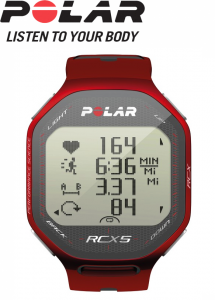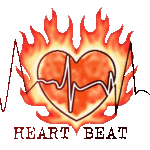What is your Maximum Heart Rate?
 I notice that an increasing number of our club members are using heart rate monitors. They are a very useful aid for improving fitness, however to make best use of them you need to determine what your maximum heart rate (MHR) is. This is because the several training zones are all based upon various percentages of MHR.
I notice that an increasing number of our club members are using heart rate monitors. They are a very useful aid for improving fitness, however to make best use of them you need to determine what your maximum heart rate (MHR) is. This is because the several training zones are all based upon various percentages of MHR.
Your MHR is the highest number of heart beats per minute (bpm) that you can achieve in an all-out effort. Your MHR is unique to you, due to your age, your genes, and your fitness level. To accurately determine your individual MHR requires clinical testing by a cardiologist or exercise physiologist. This is not practical or necessary for leisure/fitness cyclists like us.
In the absence of accurate testing it is common practice to estimate MHR by using an age-based calculation. Age is a determining factor because MHR decreases by approx 10 bpm per decade. The most commonly used method uses the formula, 220 minus your age. For example, a 40 year old’s maximum heart rate would be estimated at, 220 – 40 = 180 bpm. (Women usually have a slightly faster beat and so often use the formula, 226 – age). The age-based method provides an average statistical prediction of your MHR and is a good method for the majority of people, especially those new to heart rate training, to determine their maximum heart rate. However, note that it is an “average statistical prediction”, whereas we are all unique, which means different, not average! For example, at age 72 my “statistical average” HR max is 220 – 72 = 148. However, coming up Tilburstow Hill on the last Sunday club ride my heart rate monitor showed a peak of 157 bpm, and although I was puffing and panting I was certainly not flat out! Three weeks ago when I did go all out in a sprint to a speed limit sign, my HR went up to 160, which I would expect to be very close to my absolute MHR, of say 162 or 3.
There are a number of other methods of calculation. For example another age based calculation popular with runners, uses the “working heart rate”. This adds in the complication of using the difference between resting heart rate and maximum heart rate. This might make it more accurate in some circumstances, but is still a calculated estimate.
So if we are so reliant upon a calculated estimate, how was this formula arrived at? Well a couple of years back I read an article by a doctor who did know. Dr Mirkin is a prolific writer of articles on fitness training, health and diet. See his web site at http://www.drmirkin.com/
This is what he had to say:
Maximum Heart Rate Formula by Gabe Mirkin, M.D.
 Many exercise programs and tests used to measure heart function are based on an unreliable Maximum Heart Rate formula that predicts the fastest your heart can beat and still pump blood through your body. Although this formula is the golden standard used today, it is not based on science.
Many exercise programs and tests used to measure heart function are based on an unreliable Maximum Heart Rate formula that predicts the fastest your heart can beat and still pump blood through your body. Although this formula is the golden standard used today, it is not based on science.
Dr. Sam Fox is one of the most respected heart specialists in the world. In the 1960s, he was very helpful to me when I was competing, planning and setting up running programs. In 1970 he was the director of the United States Public Health Service Program to prevent heart disease. He and a young researcher named William Haskell were flying to a meeting. They put together several studies comparing maximum heart rate and age. Sam Fox took out a pencil and plotted a graph of age verses maximum heart rate and noticed that maximum heart rate appeared to equal to 220 minus a person’s age. They reported this observation, and for the last 40 years, the formula has been taught in physical education courses and used to test heart function and athletic fitness. However the whole concept of maximum heart rate and the formula that it is equal to 220 minus your age is flawed.
The formula is wrong because it is your legs that drive your heart rate; your heart does not drive your legs. Maximum heart rate depends on the strength of your legs, not the strength of your heart. When you contract your leg muscles, they squeeze against the blood vessels near them to pump blood from your leg veins toward your heart. When your leg muscles relax, your leg veins fill with blood. So your leg muscles pump increased amounts of blood toward your heart. This increased blood fills the heart and causes your heart to beat faster and with more force. This is called the Bainbridge reflex, taught to doctors in their first year of medical school. The stronger your legs are, the more blood they can pump, which causes your heart to beat faster.
A study of 43 different formulae for maximum Heart Rate concluded that: 1) No “acceptable” formula currently existed. 2) The best age related formula is: MHR = 205.8 – (0.685 × age). But even this has a standard deviation of 6.4 beats per minute which is very large.
A study from Liverpool, England shows that the maximum heart rate for athletes is lower than for aged-matched sedentary people. The maximum heart rate of male athletes was calculated to be 202 – 0.55 × age, and for female athletes, 216 – 1.09 × age. Both weight lifters and runners had similar maximum heart rates, which were significantly lower than the age-matched sedentary people. The athletes have hearts that can pump more blood with each beat than the hearts of sedentary people, so they do not beat as often.
Another study from Oakland University in Rochester, Michigan showed that the standard MHR formula overestimated the maximum heart rate for younger exercisers and underestimated the maximum rate for older ones.
All MHR formulae are based on averages. They can be used to help you plan and monitor your exercise program, but should not be interpreted as absolute limits or goals. If you want to train to become faster and fitter, use the following: On three days a week, never on consecutive days, either race or push the pace so that you are at your anaerobic threshold and then use bursts to exceed it to become short of breath. On the other four days, take it easy and do not put pressure on your muscles. The standard Maximum Heart Rate formula (MHR = 220 – age) does not apply to highly fit athletes.
Confused? Well you have a number of calculation options above, or just to keep it simple you won’t go far wrong by starting with the standard formula (220 – age). After each bike ride check to see what the recorded max heart rate was on that ride. You may, as I did, see a number that is higher than the initial estimated MHR. You now have a higher and more accurate figure upon which to base your new, estimated MHR.
Under normal circumstances you are unlikely to achieve your true max. Going back a few years I sometimes saw 168 on my HR monitor. On just one occasion, with an adrenaline rush as I sprinted to the finishing line at the end of a 10 mile time trial, it hit 170 bpm. I reckon that to have been my true MHR at that time. Although my achieved max is currently 160, past experience suggests that my absolute max is now likely to be a bit higher, say 162/3. Not enough difference to worry about and 160 makes calculations much easier!
So having digested the mysteries of Maximum Heart Rate, now is the time to sit down with a calculator and compute the best estimates for your age, for each training zone. However, were I to use a chart similar to that below, or a web based calculator I would have to use an “age” of about 62 instead of my true age to arrive at a MHR of circa 162/3.
For those who are serious about bike training it gets more complex. Not 4 training zones as shown above, but 6 zones, as used by British Cycling. To find out more see http://www.machinehead-software.co.uk/bike/heart_rate/heart_rate_zone_calculator_abcc_bcf.html


Very interesting, thanks Des.
I’ve worked out various different MHRs for myself, trying all the calculations above. Now I’ll go and ride hard out and see how close they are!
Good for you Julia, go for it and let us know the results. Like you I have played around with a calculator to see what the different permutations show. But at the end of the day, what counts is the figures shown when you are out riding your bike.
One of the most important HR figures is that for your lactate threshold. This is the area where you cross over from aerobic to anaerobic. The HR at which it occurs rises with increased fitness. I would expect for you, it to be at circa 85 to 90% of your MHR. The best guide is said to be when you change from very deep breathing to panting (short, fast breathes), which indicates that you are crossing the line into oxygen debt. I.E. going anaerobic.
This threshold is much more important in practical terms than your MHR. It is also easier to establish. Just try a few hills and you will soon find out when and where it occurs!
Note that the threshold does not occur at a specific beat per minute (bpm) but within a small range of bpm. For me I begin to cross the threshold at about 150 bpm and am certainly over by 155.
Incidently I mentioned in the item above, that in my younger days I hit 168 bpm on a few occasions. The first time was climbing the hill up from Westerham towards Botley Hill farm. A long hill that we all regularly climb and can get the ticker into overdrive!
So let us know some of your numbers.